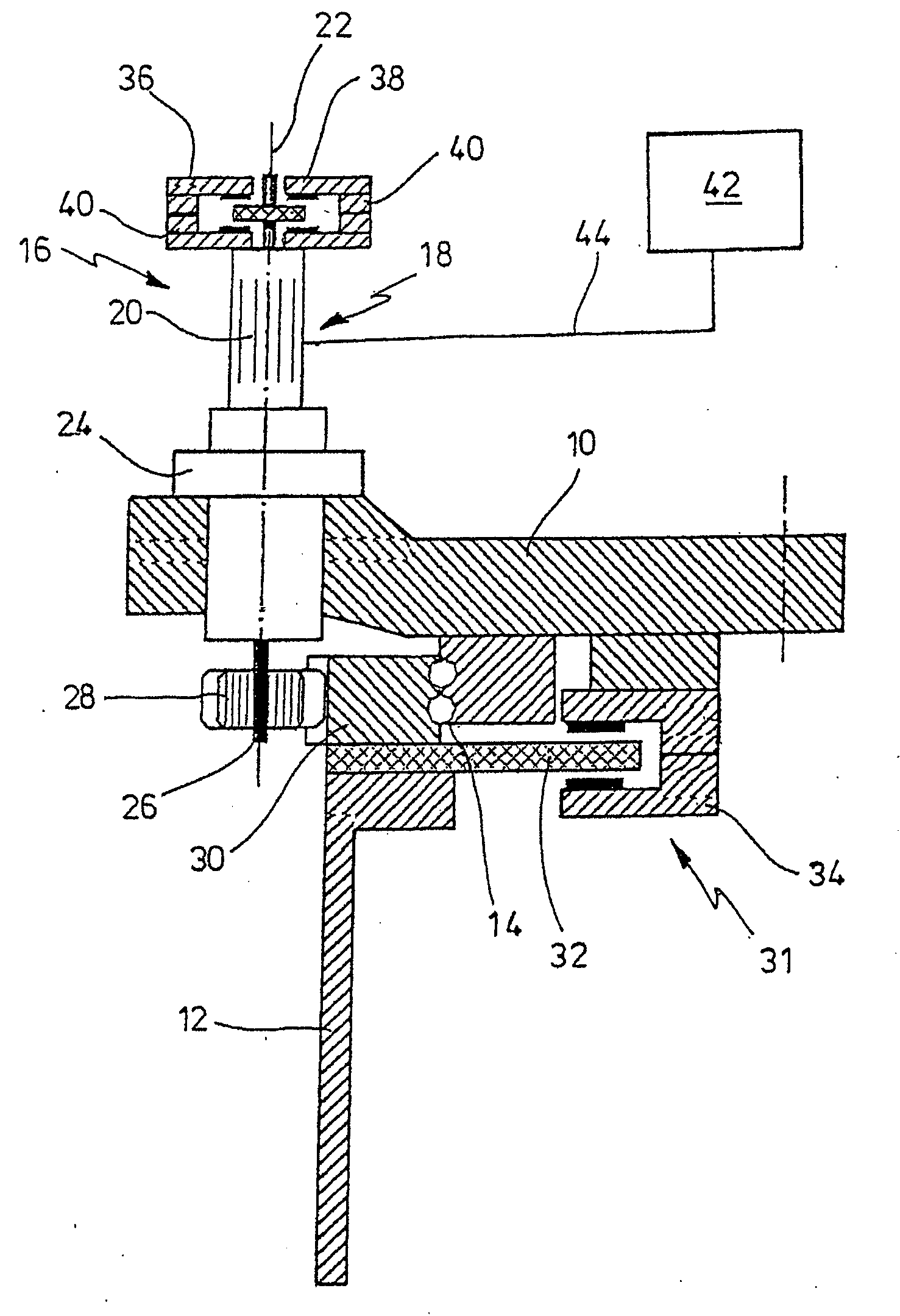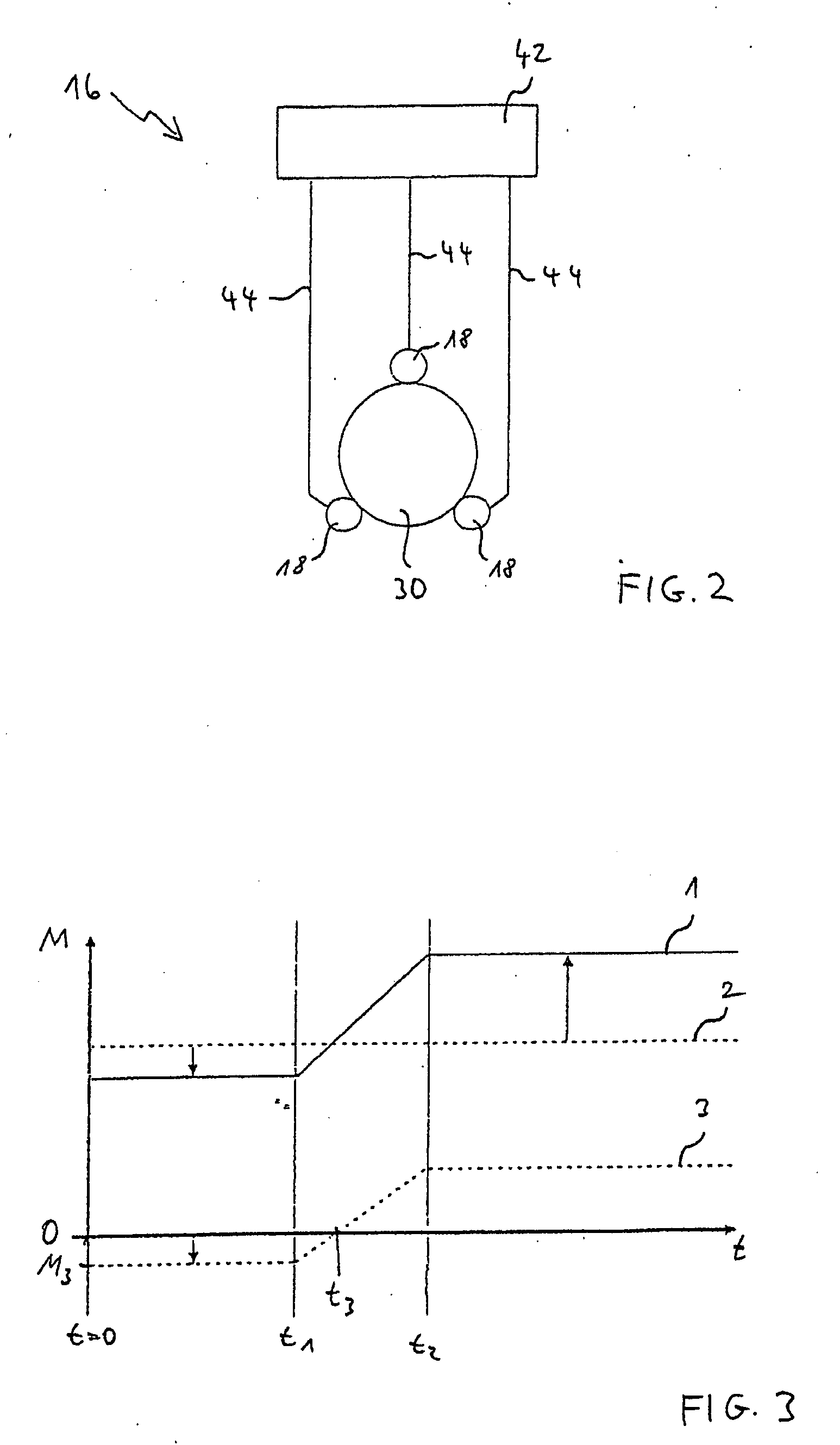Method and apparatus for rotating a component of a wind energy plant
a technology for wind energy plants and components, applied in the direction of propellers, dc motor stoppers, water acting propulsive elements, etc., can solve problems such as damage to components of wind energy plants
- Summary
- Abstract
- Description
- Claims
- Application Information
AI Technical Summary
Benefits of technology
Problems solved by technology
Method used
Image
Examples
Embodiment Construction
[0031]While this invention may be embodied in many different forms, there are described in detail herein a specific preferred embodiment of the invention. This description is an exemplification of the principles of the invention and is not intended to limit the invention to the particular embodiment illustrated
[0032]As far as not indicated otherwise, equal reference signs designate equal objects in the figures. In FIG. 1, an azimuth system of the wind energy plant with an adjustment device 16 according to the present invention is schematically shown, an azimuth adjustment device 16 in the depicted example. Of course, another adjustment system with another adjustment device, a blade pitch angle adjustment device for instance, could be provided as well. In the depicted example, the adjustment device 16 has three adjustment drives 18, presently azimuth adjustment drives 18, one of which can be recognised in FIG. 1. The adjustment device 16 serves for rotating a machine house of the win...
PUM
 Login to View More
Login to View More Abstract
Description
Claims
Application Information
 Login to View More
Login to View More - R&D
- Intellectual Property
- Life Sciences
- Materials
- Tech Scout
- Unparalleled Data Quality
- Higher Quality Content
- 60% Fewer Hallucinations
Browse by: Latest US Patents, China's latest patents, Technical Efficacy Thesaurus, Application Domain, Technology Topic, Popular Technical Reports.
© 2025 PatSnap. All rights reserved.Legal|Privacy policy|Modern Slavery Act Transparency Statement|Sitemap|About US| Contact US: help@patsnap.com



